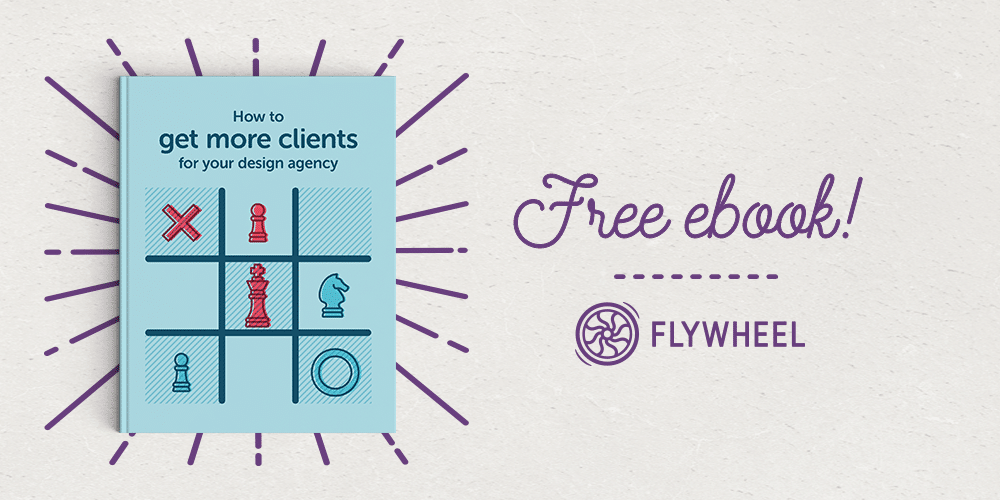
Lately, there’s been talk about the usefulness of the marketing funnel. More and more teams are looking for better solutions in their sales strategy and inbound marketing processes. Can the classic sales funnel efficiently construct and lead potential customers through a natural, non-pushy, organic customer journey?
Thus, people started saying the marketing funnel is dead.
Enter: the flywheel framework.
The flywheel framework isn’t actually anything new, but it has recently resurfaced a potential solution to the marketing funnel question. Let’s not get this confused. The flywheel framework is an all-encompassing customer experience structure. (And, yes, we also just like the name Flywheel.)
“Did the flywheel framework kill the marketing funnel? ”
Why are businesses going as far as redefining their marketing KPIs and strategies because of one simple idea?
Let’s take a deeper dive into what these strategies are and how to use them to grow and scale your business.
- The importance of your marketing funnel
- How the flywheel framework operates
- How to keep the flywheel spinning
- Key takeaways
The importance of your marketing funnel
We need to start off by taking a look into the marketing funnel to understand what some of the problems are and how to fix them.
The funnel is a way to take people who were introduced to your brand for the first time, filter them down, and nurture them until they become a paying customer. “Your job as a marketer is to help guide the user’s path from brand recognition to brand advocate. ”
The marketing funnel can provide great insight for your business. It’s an insightful indicator of your successes, and you can pull a ton of data around the customer journey you’ve created. That allows you to make more informed decisions and better identify growth.
Some of the funnel’s issues are found in the customer journey. Where the potential customer lies depends on how they interact with your brand or website, what content they’re engaging with, or certain characteristics they have. There are floods of people your brand may be reaching at the top, but at times it can feel like a waiting game as they trickle down to the customer phase.
The funnel can also be more complicated than it seems. Leads can get stuck or lost anywhere in the funnel. Then there are issues with the ending customer stage, where the framework says, “congrats, you did it!” But we, as marketers, know our relationship with the consumer doesn’t end after a purchase. There’s so much more to customer marketing.
Perhaps, the marketing funnel isn’t the best metaphor for how a company should envision the entire customer journey. That’s where the flywheel framework steps in again.
How the flywheel framework operates
“Spoiler alert: the flywheel didn’t actually kill or replace the traditional marketing funnel. ”
The flywheel framework is a solution that allows you to plan and reach both current and potential customers in all phases of their customer journey. The fact that it’s a cycle framework makes all the difference! One thing continually impacts another and keeps the process (or flywheel) spinning.
While the marketing funnel is a great stand-alone workflow for customer acquisition, by incorporating the flywheel framework, you’re better able to focus on inbound marketing and use the natural cycle to inspire growth for your business.
Each section represents a different phase in the customer journey and a handoff from the perspective of your business. Let’s break that down a bit:
Attract
Essentially, this is the phase your marketing team knows and loves. It’s about finding potential customers in an organic way and nurturing them into the next phase.
The key to success in the attract phase is to make it feel natural and informative. Your potential customers want to see useful content that grabs their eye. From there, you can keep their attention and work them down the funnel in a simple way.
Engage
Think of the engage process as an extension of the marketing funnel. This is where you want to do more than just talk at your audience, instead, you want to build real, trusting relationships. Now that the lead has chosen to interact with your brand, you want to give the person a personalized experience in which they feel like you’re listening to their problems and providing their solution.
The funnel shouldn’t be obvious to your potential customers. Working through it should feel like a walk in the park where potential customers have the ability to choose their own journey.
Delight
“Good customer marketing continues to develop and improve experiences at each point in the customer journey. ” In order to really make an impact for your customers, this goes far beyond the marketing funnel.
This section arguably makes the biggest impact with the flywheel framework. “A cohesive brand across all experiences propels your customer from acquaintance to evangelist. ” Ask yourself what you’re doing on an everyday basis in order to inspire and delight your customers. Even the simplest things that take hardly any time make the biggest difference in overall experience.
Here at Flywheel, we constantly try to come up with ways to delight our customers. For example, we’ve sent survey participants and customers with birthdays t-shirts and hand-written notes just to celebrate and thank them!
 Meet one of Flywheel’s customer success specialists, Katie!
Meet one of Flywheel’s customer success specialists, Katie!That extra step has a massive impact on your business! Some of the successes that come from a flywheel framework are reduced churn, better conversion rates, and identifying holes in the processes. And that keeps your business running smoothly from marketing to sales to customer success.
So, how does it come full circle?
How to keep your flywheel framework spinning
Now that you have the insight to frame your customer journey, it’s time to think about what your company is doing to keep up the momentum. It’s important to think about how you’re continuously working to better inform and delight your customers each and every step of the way.
You’re not just using methods to attract potential customers, you’re keeping them engaged and continuing the process even after they’ve become current customers. You have delighted customers, so now what?
Use their excitement and love of your company to feed back into the start of the process. By creating these brand loyalists and evangelists, they’re better able to keep feeding more potential customers back into the introductory stages to your work.
Key takeaways
I cannot stress enough the importance of a smooth, cohesive customer experience. From the first moment of awareness until they’re gushing about your work with others, your customers want to feel like they’re talking to a friend rather than working through a protocol.
Using the flywheel framework allows you to think of the big picture and not get stuck in the weeds figuring out where the journey falls apart. Instead, it’s easier to discover where the handoff isn’t as smooth so you’re able to better brainstorm how to improve the transition.
Let’s recap:
- Your marketing funnel is important to lead nurturing
- The flywheel framework encompasses the entire customer journey
- Attracting, engaging, and delighting customers leads to less work for you and your team
- This process makes it easier to identify bumps in the customer journey
- The flywheel framework turns brand awareness into brand evangelization
This means there’s more time to focus on doing your best work.
Free ebook: How to get more clients for your design agency
This free guide will cover everything from optimizing processes to successful client relationships to defining a marketing strategy. Download it now to start booking more business!
All images and designs in this article were created in-house by the marketing team at Flywheel.













Comments ( 5 )
enuvo
July 7, 2025
amoxicillin tablets - https://combamoxi.com/ amoxicillin cheap
Binance
June 2, 2025
Can you be more specific about the content of your article? After reading it, I still have some doubts. Hope you can help me.
livros de viagens
March 10, 2025
Greetings! Congratulations on the relevant and engaging content on your website. The article I read was very enlightening. 783575816
https://livrodetodos.com.br
break away
December 7, 2018
Awesome! I can't find solution for inbound marketing. But I have read the article I understand how to fix some of important issues. Thanks guys for great work!
Brian
September 21, 2018
You guys should really partner with HubSpot on stuff like this.